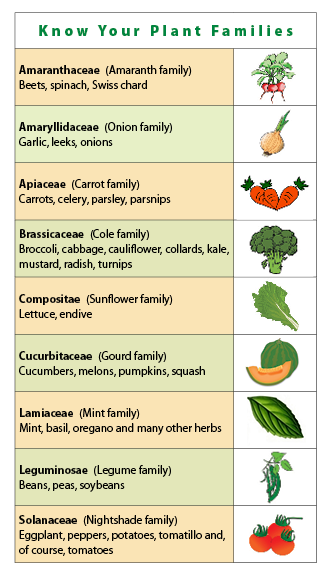The Passionate Gardener
To Rotate Crops in a Small Garden, Know Your Plant Families
by Ron Kushner, for the Shuttle
Crop rotation is a scheme of planting whereby different demands are made on the soil each year. It is essential for a good growing program. Vegetables vary in their nutritional needs and therefore deplete the soil in different ways. Growing the same crop in the same place each year can create a deficiency in certain elements; rotating crops addresses this. It’s good for your soil as there is less of a requirement for fertilizer.
In addition, many pests and diseases are plant-host-specific, in that they are attracted to the same plants or plant families. By itself, crop rotation will never guarantee the prevention of disease or pests, but it does go a long way in helping create a healthier and better yield.
I recommend a four-year rotation. You can grow the same crops each year, just always in a different location. In the fifth year, the four-year cycle begins again. Obviously, the larger the garden area, the easier it is to rotate crops. A small space could be created with four raised beds. The sizes can vary but four 4-foot-square beds would be ideal for this program.
Working in a small garden space means that you will probably practice succession planting during the season, planting different things as the season progresses.
In order to rotate your crops in the proper manner, understanding the various plant families is the first step. Most of the plants within a family have similar needs and similar problems and are generally grown in the same manner.
My example here includes four raised beds but you could use any combination you have to your benefit. Try to keep a record of what you planted where. A simple box diagram in a notebook is all you need and label each box #1, #2, #3 and #4. Title the diagram “Year 1” and you have a simple, effective journal.
Here is a recommended planting program for each bed for Year 1. Of course, you can vary it as you choose with other vegetables that you may prefer to grow, keeping their families in mind.
- Box #1 Plant Compositae and Solanaceae together — for example, early lettuce followed by tomatoes.
- Box #2 Plant Brassicaceae and Cucurbitaceae together — for example, early mustard greens and radishes followed by summer squash.
- Box #3 Apiaceae & Lamiaceae together— for example, carrots, parsley and early cilantro, with basil added later in the season when the weather warms up.
- Box #4 Amaranthaceae and Leguminosae together— for example, early spinach followed by bush beans.
After the first crop harvest, remove any plant residues, especially diseased material. Bush bean remains can actually be chopped up and left to decompose where they were grown to return nitrogen to the soil.
When combining different types of plants in a small space, vertical trellising can be extremely helpful. This works great for cucumbers, melons and summer squash. Also be on the lookout for varieties that are space efficient.
Each year, rotate the crop combinations in a clockwise fashion. In a larger garden area just divide your space into four equal quadrants and use the same principles.
Questions or comments: ron@primexgardencenter.com.


